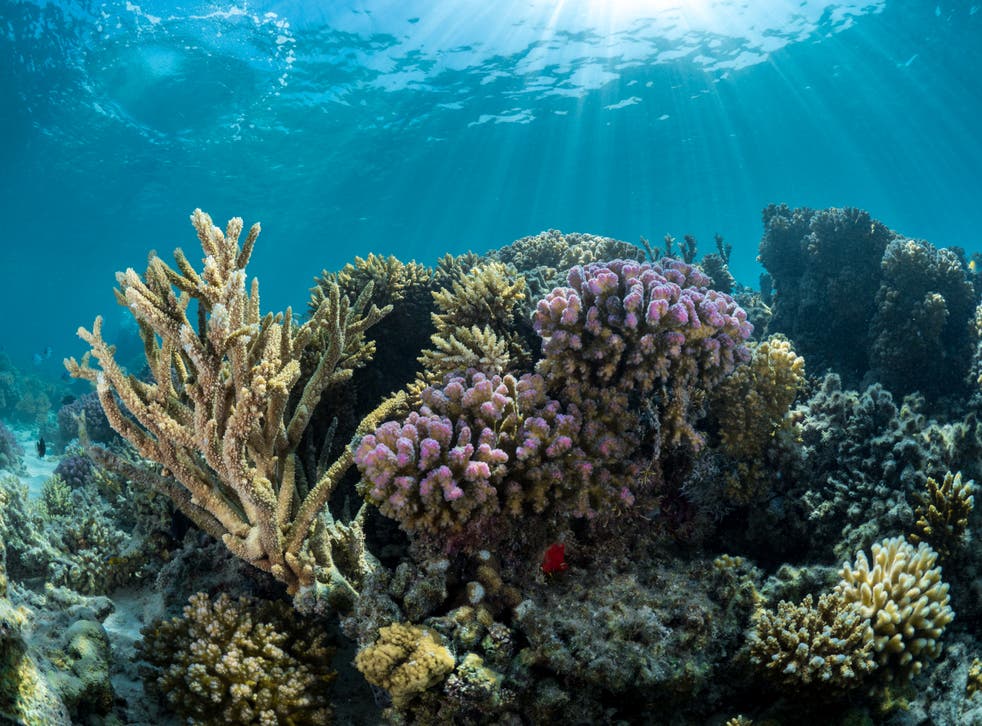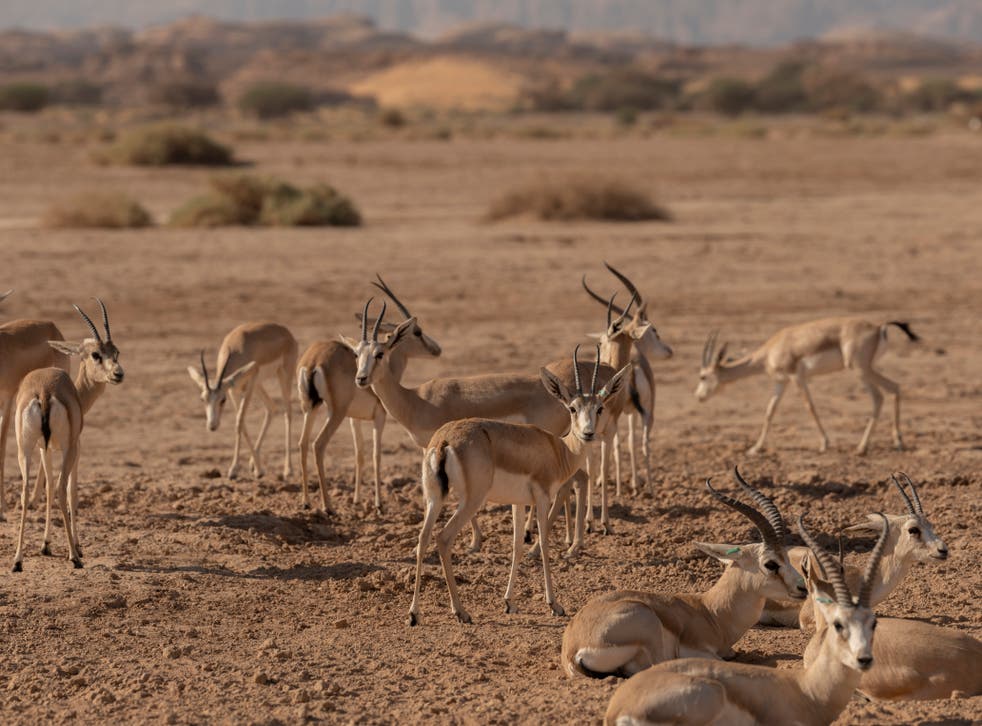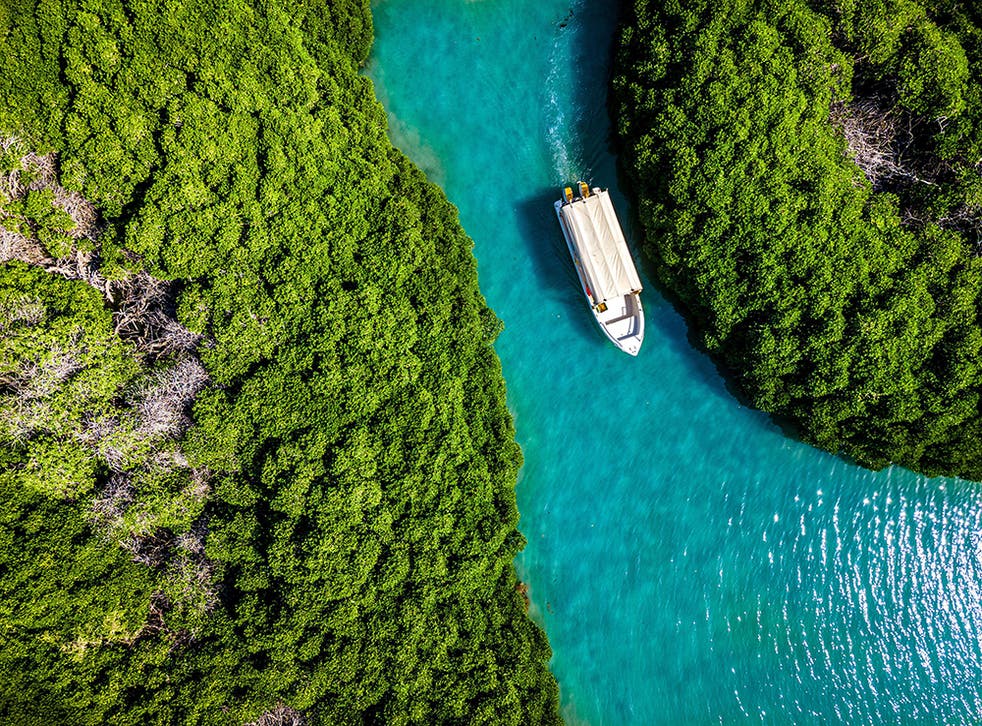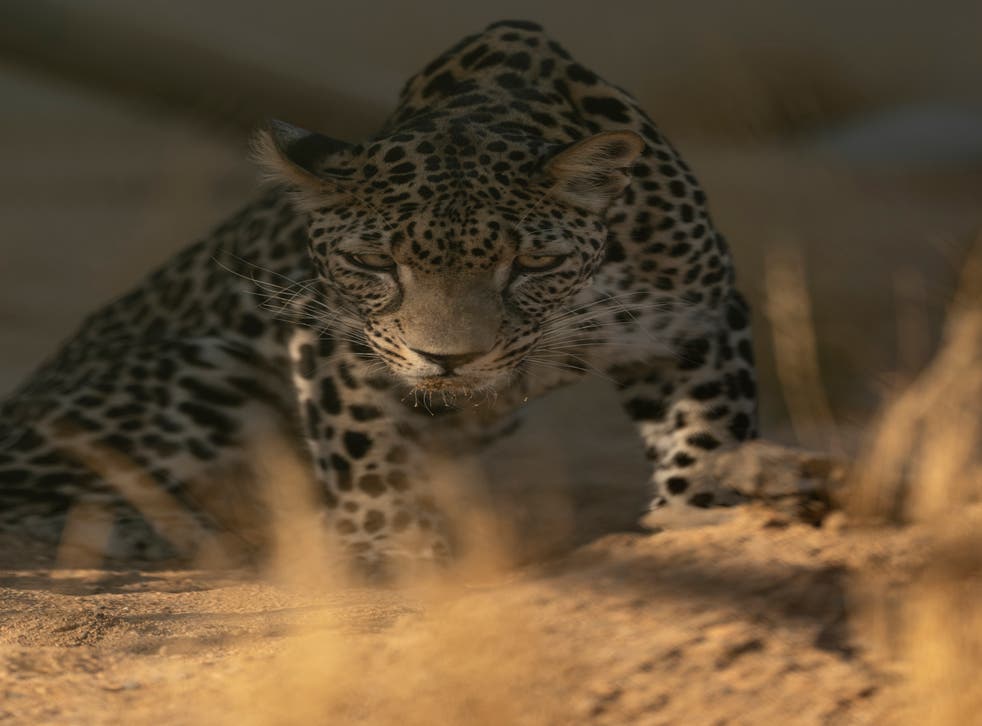Fertile Future – the ambitious goals of the SGI

It’s one of the most far-reaching sustainability programmes on planet Earth – The Saudi Green Initiative. In the coming months, the Independent will bring you articles, videos, audio and events where we speak to the scientists and researchers, while looking at the impact on everyday lives in the desert kingdom.We begin with an overview. What is the scale of the challenge and how is it being met?
By 2030, 30% of Saudi Arabia will be protected land. Decades of soil erosion and desertification will be reversed. Trees will be planted: 10 billion of them. They will be fruit trees, agricultural trees, but also 100 million native species.
In the desert fringes, species like ghaf and acacia, which have adapted to the arid conditions over generations, will reappear in huge numbers. At the other extreme, millions of mangroves will be grown to protect the marine environment
There will be ten protected areas within the country, including seven royal reserves.
In the coming weeks and months, the Independent will delve deeply into the changes the Saudi Green Initiative (SGI) will bring – cultural change, ecological change, the reintroduction of native animals, the preservation of desert habitats, the regeneration of reefs in the Gulf and Red Sea.
The man at the heart of this unprecedented act of environmental renewal is Dr Muhammad Ali Qurban, chief executive of the National Centre for Wildlife.

The protected areas may be fenced off. That does not mean they are out of bounds.
“The protected areas will have three parts,” says Dr Qurban. “There’s an area reserved for biodiversity. There will be areas for graziers, organised with a plan and a model. And an area for tourism. We want visitors to visit and enjoy these locations on safari.”
The SGI is part of the wider, dramatic diversification the Saudi economy is going through as part of its Vision 2030 plan. The country is opening up in more senses than one. Allowing the rest of the world to experience its extraordinary and surprisingly diverse natural environment is very much part of it.
As the land recovers and the vegetation returns, so will the species that feed on it: ibex and oryx among them. Herds of goats and camels too, but their grazing areas will be strictly controlled: industrial levels of grazing is one of the reasons the land becomes barren. The arid, featureless desert of popular imagination is not a ‘natural’ state for much of Arabia beyond the heat and dunes of Rub’ Al Khali, the fabled Empty Quarter.

Wild ungulates can overgraze too, stopping young shoots and trees from getting established. Think of the Highlands of Scotland, where uncontrolled and unfearful deer populations create the barren hills and valleys we see today.
What if you reintroduce the fear and flight factor, then the herds move on before the land becomes degraded?
In Arabia, the time is drawing near when hyenas, cheetahs and, above all, leopards will be reintroduced to a land where they roamed freely until the 20th century.
The facts, and the objectives of the SGI are as follows. There are 60 separate initiatives costing a total of 700bn Riyals. Even beyond the protected areas (currently 16% of the country), there will be strict new measures to stop overgrazing and uncontrolled development.
As for the seas around Saudi Arabia, the Red Sea and the Gulf, 30% will become Marine Protected Areas and 100 million new mangroves will protect those ecosystems.

In 2025, one of the world’s largest urban green projects, King Salman Park, will be opened. On energy, perhaps the most eye-catching headline is that the world’s biggest oil producer intends to become the world’s leading producer and exporter of hydrogen fuels.
Conferences, like the forthcoming COP27, are a time for presentations, plans and promises. But as Muhammad Qurban says, the facts are already on the ground. Saplings are planted within it.
In fact, the Wildlife Centre thinks they may arrive at their targets well before 2030 – “we are planning for 2025, 2027,” says Dr Qurban.
There are now three generations of oryx in the wild in Saudi Arabia: a remarkable transformation for an animal that was declared extinct in the wild 50 years ago.
This year more leopard cubs have been born in the AlUla breeding centre. Reintroducing the most magnificent and elusive of Arabian predators to the wild will take time. But it will happen.

Yet away from the slide presentations and the benchmarks, these are measures that will profoundly change lives of Saudis – for urban dwellers, as well as coastal and rural communities, as cities embark on their own journeys. As part of its own green plan, Riyadh, the capital, will, for example, divert 94% of its waste away from landfill by 2035. New job opportunities are opening up as tourists and scientists come to the country in ever greater numbers and experience the national parks, and their extraordinary natural and human heritage, for themselves.
There is no question that graziers, pastoralists and hunters will need to adjust to a new reality where the natural environment and the creatures that inhabit it become a natural resource that is very strictly protected.
Only it isn’t exactly a ‘new reality’.
For 2000 years, and probably longer, the Arab lands were managed between different tribes by a system known as himā. The himā protected land on behalf of the community; but it also protected the earth, as areas were set aside to prevent overgrazing and ensure they were regenerated.
For Arab peoples living in a land of scarce resources, it was a tradition that preserved both livelihoods and fragile ecosystems.
Indeed, it sounds very like some of today’s most fashionable agricultural and rewilding theories. But in the last century, nation states were born, motor vehicles arrived and the demand for food, especially meat, increased with growing populations. The himā system was no longer seen as fit for purpose.
The scholar Lutfallah Gari takes up the story in the Muslim Heritage website:
The period between the banning of the himā system and the start of constructing national parks and protected areas was a period characterised by severe destruction of the plant cover through overgrazing and felling of trees as well as over-hunting of wild animals. That period extended the tasks of the governmental agencies, not only to conserve the continuity of the plant cover which was depleted, but also to restore part of it.
That article was written in 2008. Much work has been done in the intervening period. But the Saudi Green initiative is an exponential change. Yet in other ways, it is founded in a long tradition: of harmony between people and nature.
Find out more about the MGI summit and SGI forum here: greeninitiatives.gov.sa
Published by The Independent in partnership with the Saudi Green Initiative
Related Posts


